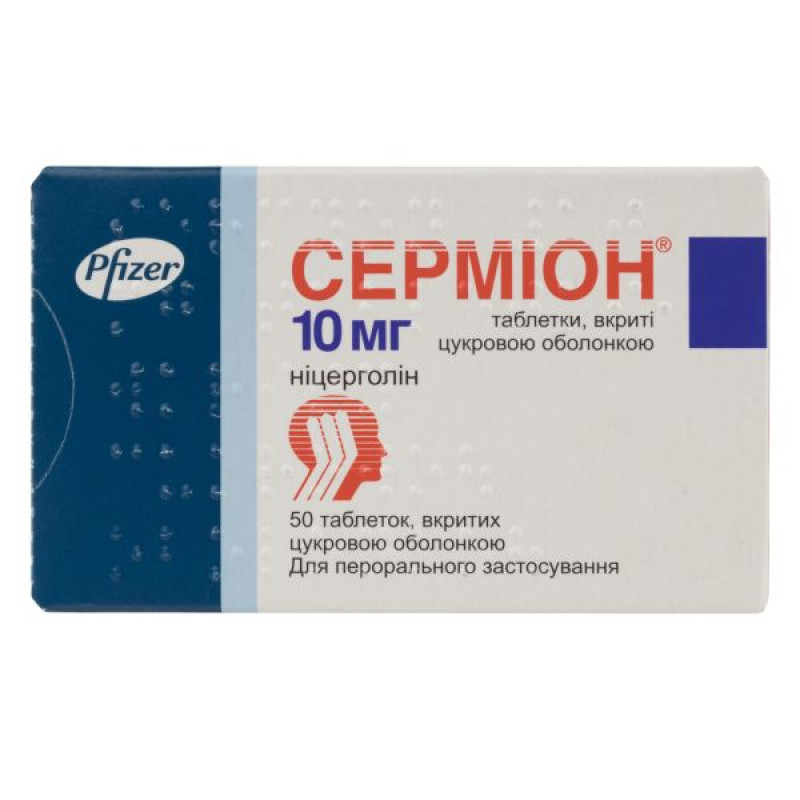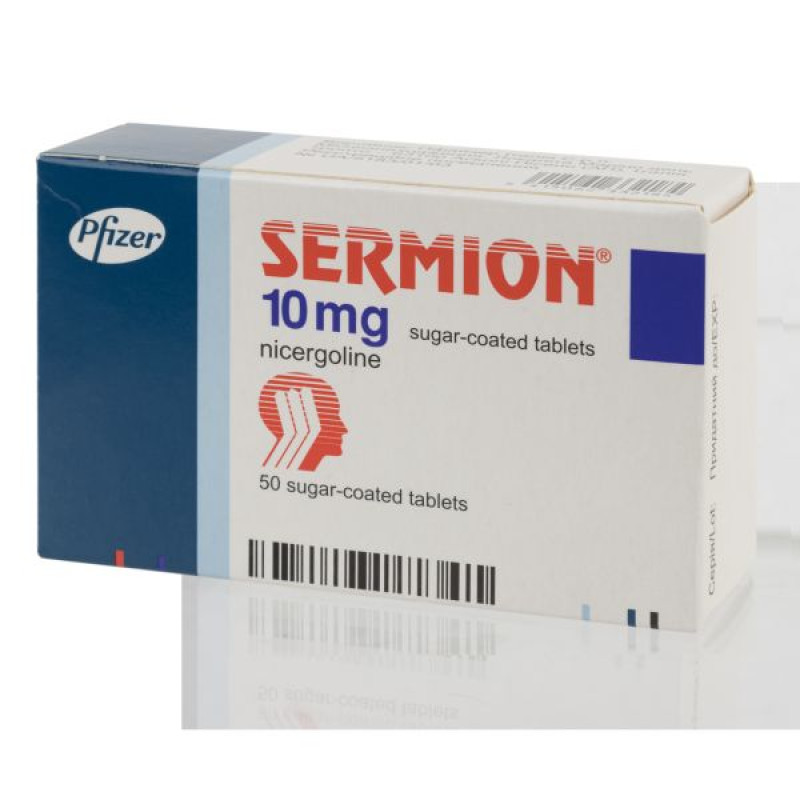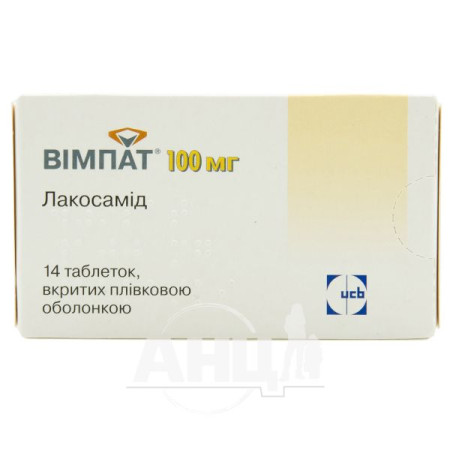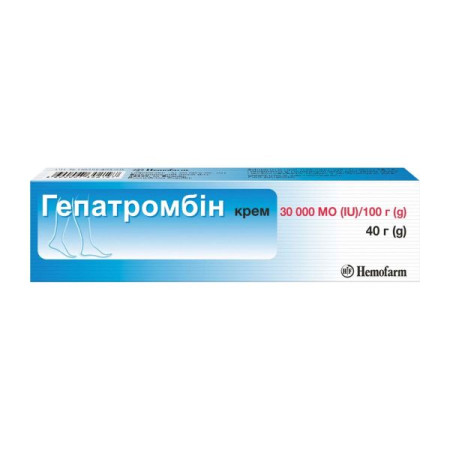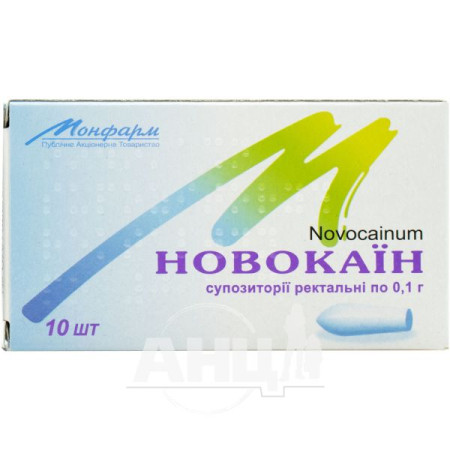Sermion sugar-coated tablets 10 mg No. 50
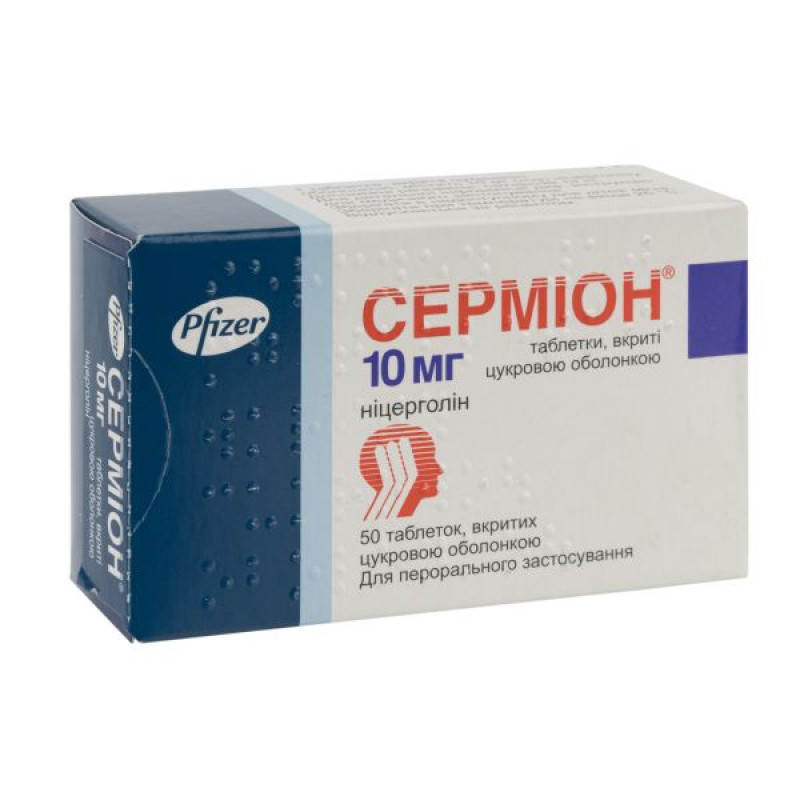
Instructions for Sermion sugar-coated tablets 10 mg No. 50
Composition
active ingredient: nicergoline;
1 tablet contains nicergoline 5 mg or 10 mg;
Excipients: calcium hydrogen phosphate dihydrate, microcrystalline cellulose, magnesium stearate, sodium carboxymethylcellulose, titanium dioxide (E 171), sucrose, talc, acacia gum, sandaraca gum, magnesium carbonate, rosin, carnauba wax, sunset yellow (E 110) (for 5 mg tablets).
Dosage form
Sugar-coated tablets.
Main physicochemical properties:
5 mg tablets: round, convex tablets, coated with an orange sugar coating;
10 mg tablets: round, convex tablets, coated with a white sugar coating.
Pharmacotherapeutic group
Peripheral vasodilators. Ergot alkaloids.
ATX code C04A E02.
Pharmacological properties
Pharmacodynamics
Nicergoline is an ergoline derivative with alpha-1-adrenergic blocking activity. After oral administration, nicergoline undergoes rapid and extensive metabolism with the formation of a number of metabolites, due to which activity is also observed at various levels of the CNS.
When administered orally, Sermion® exhibits numerous neuropharmacological effects: it not only increases the uptake and utilization of glucose in the brain, enhances the biosynthesis of protein and nucleic acids, but also affects various neurotransmitter systems. Sermion® improves cerebral cholinergic functions in old animals. Long-term administration of the drug nicergoline in old rats prevented the age-related decrease in acetylcholine levels (in the cortex and striatum) and also reduced the release of acetylcholine (in the hippocampus) in vivo. After long-term oral administration of the drug Sermion®, an increase in choline acetyltransferase activity and muscarinic receptor density was also observed. Moreover, in in vitro and in vivo studies, nicergoline significantly increased acetylcholinesterase activity. In these experimental studies, neurochemical effects were observed simultaneously with a persistent improvement in behavioral responses, for example, in the maze test in mature animals that were administered Sermion® for a long time, the development of responses similar to those in young animals was observed.
Sermion® has also been shown to reduce cognitive impairment induced by several agents (hypoxia, electroconvulsive therapy (ECT), scopolamine) in animals. Oral administration of Sermion® at low doses increases dopamine metabolism in adult animals, particularly in the mesolimbic region, likely by modulating dopaminergic receptors. Sermion® improves signal transduction mechanisms in cells in adult animals. Both after a single and long-term oral administration of the drug, an increase in basal and agonist-sensitive phosphoinositide metabolism was observed. Sermion® also increases the activity and translocation of calcium-dependent protein kinase C isoforms to the membrane. Due to its antioxidant effect and ability to activate detoxification enzymes, Sermion® prevents neuronal cell death caused by oxidative stress and apoptosis. Sermion® attenuates the age-related decrease in neuronal nitric oxide synthase mRNA expression, which may also contribute to improving cognitive function.
After oral administration, nicergoline is rapidly and almost completely absorbed. The maximum radioactivity in serum after administration of low doses (4-5 mg) of radiolabeled nicergoline to healthy volunteers was observed after 1.5 hours. The absolute bioavailability of nicergoline after oral administration is approximately 5% due to its high hepatic clearance and presystemic metabolism. 1 hour after oral administration of 14C-labeled nicergoline to rats (5 mg/kg), nicergoline and its main metabolite (MMDL, 50% of total radioactivity) were detected in the brain of the animals. After oral administration of therapeutic doses of nicergoline to healthy volunteers, the area under the curve of serum radioactivity was 81% and 6% of the value calculated for the two main metabolites of nicergoline - MDL and MMDL, respectively. Peak plasma concentrations of MMDL and MDL were reached approximately 1 and 4 hours after administration with a half-life of 13 and 14 hours. The distribution of the drug in tissues is rapid and extensive, as reflected by a short phase of distribution of serum radioactivity. The volume of distribution of nicergoline is quite large (> 105 l). Nicergoline is highly bound to human plasma proteins, with a greater affinity for α-acid glycoprotein than for serum albumin. The drug is excreted predominantly in the urine (80%), 10-20% of the drug is excreted in the feces. The pharmacokinetics of nicergoline are linear (when administered orally in doses of 30-60 mg). Nicergoline is extensively metabolized before excretion, primarily by hydrolysis of the ester bonds to form MMDL, and then to MDL by demethylation (catalyzed by the CYP2D6 isoenzyme). In patients with severe renal impairment, a significant decrease in urinary excretion of MDL was observed. In the secondary metabolic pathway, 1-demethyl-nicergoline is formed by demethylation (1-DN), which is then metabolized to MDL by hydrolysis of the ester bonds.
Indication
Acute and chronic cerebrovascular metabolic disorders resulting from atherosclerosis, thrombosis and embolism of cerebral vessels; transient disorders of cerebral circulation (transient ischemic attacks).
Headache.
As an adjunctive therapy for systemic arterial hypertension.
Contraindication
Hypersensitivity to any component of the drug or to ergot alkaloids; in case of recent myocardial infarction, acute bleeding, orthostatic hypotension, severe bradycardia.
Concomitant use of sympathomimetics (alpha or beta receptor agonists).
Interaction with other medicinal products and other types of interactions
The drug is used with caution in combination with:
- antihypertensive agents (Sermion® may potentiate their effects);
- drugs that are also metabolized by the cytochrome P450 2D6 system, because interactions with these agents cannot be excluded (such as quinidine, most antipsychotics, including clozapine, risperidone, haloperidol, thioridazine);
- acetylsalicylic acid (bleeding time may be prolonged);
- drugs that affect uric acid metabolism (metabolism and excretion of uric acid may change).
Sermion® should not be used simultaneously with CNS stimulants, α- and β-adrenomimetics. Since nicergoline enhances the effect of anticoagulants and antiplatelet agents, blood clotting parameters should be monitored when they are used simultaneously with nicergoline.
The drug may enhance the effects of cholinomimetic agents.
Nicergoline may potentiate the effects of β-blockers on the heart.
Application features
In therapeutic doses, Sermion® does not usually cause changes in blood pressure, however, in patients with arterial hypertension, the drug may gradually reduce blood pressure.
The drug should be used with caution in patients with angina pectoris and severe atherosclerosis. At the beginning of treatment, orthostatic hypotension may develop.
The drug should be used with caution in patients with a history of hyperuricemia or gout and/or during concomitant treatment with drugs that may affect the metabolism and excretion of uric acid.
Since approximately 80% of nicergoline metabolites are excreted in the urine, it is advisable to reduce the dose of the drug in patients with impaired renal function (serum creatinine ≥ 2 mg/dl or 175 mmol/l).
You should refrain from drinking alcohol while using the drug.
The effect of the drug increases gradually. Therefore, the drug should be used for a long time. It is advisable that the doctor evaluates the effect every 6 months and decides on the appropriateness of continuing the drug.
The development of fibrosis (e.g., pulmonary, cardiac, valvular, and retroperitoneal fibrosis) has been associated with the use of certain ergot alkaloids, which possess agonist activity at serotonin 5-HT2β receptors.
Before prescribing this class of medications, doctors should be familiar with the signs and symptoms of ergot overdose.
Use during pregnancy or breastfeeding
Toxicological studies have not revealed any teratogenic effects of nicergoline. Given the indications of Sermion®, its use in pregnant and lactating women is unlikely. If the indication for treatment is justified, treatment should be started only after assessing the risk/benefit ratio.
It is not known whether nicergoline passes into breast milk, therefore Sermion® should not be used in women who are breastfeeding.
Ability to influence reaction speed when driving vehicles or other mechanisms
Although the clinical effects of Sermion® are used to improve attention and concentration, its effect on the ability to drive vehicles and work with other automated systems has never been studied. In any case, caution should be exercised, taking into account the underlying disease of the patients.
Method of administration and doses
The recommended daily dose of the drug is 5-10 mg three times a day at equal intervals of time, preferably between meals, for continuous treatment.
Dosage regimens, duration of treatment and route of administration depend on the severity of individual clinical manifestations of the disease. In some cases, it is better to start with parenteral treatment and then switch to long-term oral administration of the drug.
According to the results of pharmacokinetic and tolerability studies, no dose adjustment is required for elderly patients.
Children
The drug should not be used in pediatric practice.
Overdose
When using nicergoline in high doses, a temporary decrease in blood pressure may occur. Special treatment is usually not required, it is enough to put the patient in a supine position for a few minutes. In exceptional cases of insufficient blood supply to the brain and heart, sympathomimetics and constant monitoring of blood pressure are recommended.
Adverse reactions
The following non-serious side effects have been reported rarely.
On the part of the digestive tract: constipation, nausea, vomiting, increased acidity of gastric juice, diarrhea, abdominal pain.
From the cardiovascular system: arterial hypotension, dizziness, angina attacks, cold extremities, tachycardia.
From the nervous system: dizziness, headache, confusion, drowsiness, insomnia.
Allergic reactions: angioedema, itching, skin rashes.
On the part of the reproductive system in men: ejaculation disorder.
General disorders: feeling hot, hot flashes, sweating, pain in the extremities, increased body temperature.
During clinical studies, an increase in uric acid levels in the blood was observed, which was independent of both the prescribed dose and the duration of treatment.
Expiration date
3 years.
Storage conditions
Store at a temperature not exceeding 25 °C.
Packaging
5 mg tablets: 15 tablets in a blister; 2 blisters in a cardboard box.
10 mg tablets: 25 tablets in a blister; 2 blisters in a cardboard box.
Vacation category
According to the recipe.
Producer
Pfizer Italy S. r. l.
Pfizer Italia Srl
Location of the manufacturer and address of its place of business.
The location of Marino del Tronto is 63100 Ascoli Piceno (AP), Italy.
Localita Marino del Tronto – 63100 Ascoli Piceno (AP), Italy.
There are no reviews for this product.
There are no reviews for this product, be the first to leave your review.
No questions about this product, be the first and ask your question.




